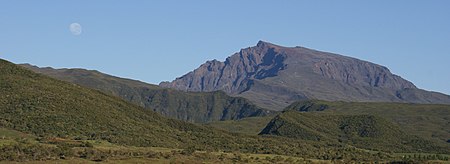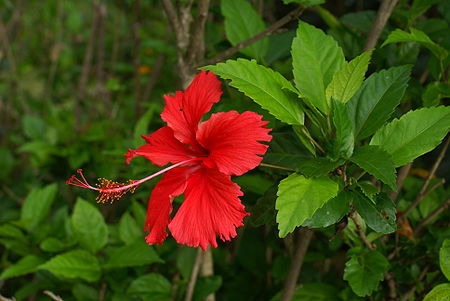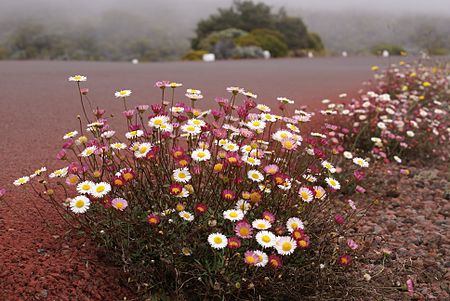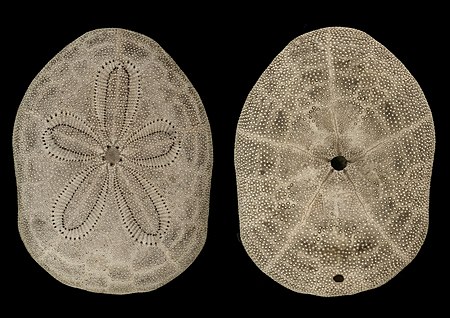User:B.navez
Carnet d’images |
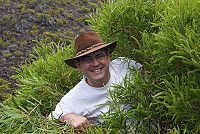
Oté, |
No snow peak
|
Piton des Neiges (Snow Peak), the eroded remains of one of the shield volcanoes that built Réunion island, is the highest point (3070 m) of Indian Ocean.
|
On the street market of Toliara
|
Toliara is a provincial capital of Madagascar, the main town of the south-western area.
|
Youth foliage of Bourbon Red Fan-Palm
|
Latania lontaroides is a species of fan palm tree endemic to Réunion island (formerly Bourbon island).
|
Adventive craters of Fournaise volcano
|
Piton de la Fournaise is a regularly active shield volcano on Réunion island. |
Pass on the path in Mafate
|
Hiking is one of the most popular attractions of Réunion island, specially in the road-free areas such as Mafate, one of the large natural cirques dug by erosion.
|
Smart style of a red Hibiscus flower
|
Though many cultivars of Hibiscus rosa-sinensis have been developed with various colors and shapes, the wild-like form has kept the simple elegance of an intense red color with a very long and amazing column. |
Pair of mangoes
|
Mangoes are one of oldest cultivated fruit in the world, produced by a tree of the species Mangifera indica. |
Rainbow shower on the sugar canes
|
Sugar cane fields fashion landscapes of Réunion Island where sugar is the first exported product. |
Formica Leo
|
Formica Leo is a small cinder cone depending on Piton de la Fournaise. It is said it grew up during an eruption in 1753. |
Climbing to cosmos
|
Enwildered blue Morning Glories (Ipomoea nil) are creeping along fading Cosmos flowers (Cosmos bipinnatus) that had been broadcast sown.
|
Busy bee in white cluster
|
Ten or so different Dombeya species are representative of natural forests of Réunion island. They bloom with clusters of delicate flowers. |
Pair of volcanoes
|
Most eruptions occur in the central crater or along the flanks of the Piton de la Fournaise main cone one can see here on the left in the background. |
Tree locust on Begonia
|
This tree locust (Anacridium melanorhodon ssp. arabafrum) travelled on my windscreen from coastal dry areas to a higher and moistier place. |
Spiders’ happy bee meal
|
The red-legged golden orb-web spider (Nephila inaurata), nicknamed Bib by Réunion’s people, is a species whose females are impressive large spiders, very much bigger than males. These ones take advantage of their mate’s web to share the remains of her meals.
|
Invasive beauty
|
Introduced flowers, such as this Kahili Ginger (Hedychium gardnerianum), once for its delicate scent, from its native Himalayan mountains to Réunion island, may become terrible invaders that cause much trouble to the vulnerable ecosystems of isolated islands.
|
Crazy daisy
|
Along the red-skinned road of the Volcano Crasy daisies, as locally called, (Erigeron karvinskianus), make a delicate garland.
|
Voladores
|
Los Voladores, the flyers, dance and play the flute and drums at the tip of the pole, 30 meters high, begging the gods for good harvests and then let themselves whirling down, thus connecting the sky to the earth.
|
Yellow flower
|
The "Yellow Flower" (Hypericum lanceolatum), a bush closely related to St John's wort, is known to be visited on Réunion island by the "Green Bird" (Zosterops olivaceus) !
|
Tropical sand urchin's test
|
The cake urchin Clypeaster reticulatus lives in burrows dug in the sand of tropical lagoons. Like some other sand urchins but unlike free water urchins, anus hole has moved to the lower face, not to be filled with mud.
|
Other quality pictures | |
| According to the licenses I’ve chosen, you may use my pictures freely, even for commercial uses and derivative works, so long as you credit my name for each publication and so long as you mention the same rights for the published pictures. I would appreciate if you send me an e-mail. | |
| Here could you find all my uploadings. | |
